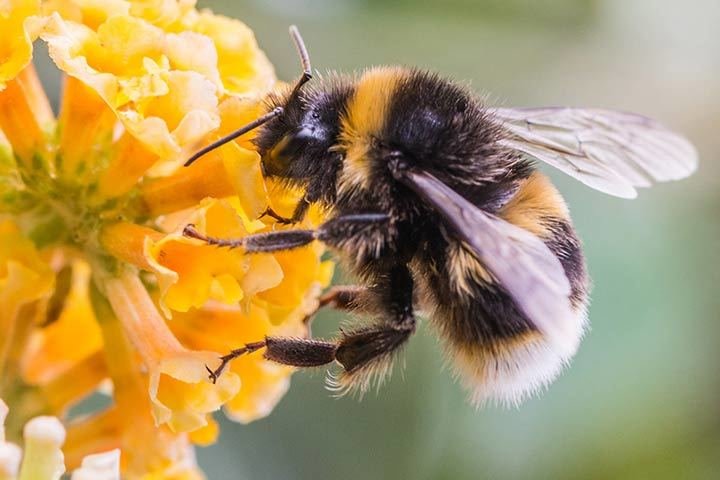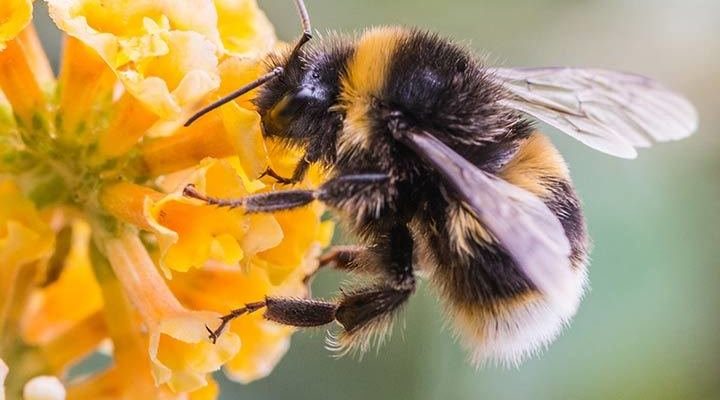
Imagine a cozy little neighborhood bustling with activity. That’s what a bumblebee’s habitat often resembles. Bumblebees prefer to set up shop in areas where they can find plenty of flowers to gather nectar and pollen, which is their main source of food. These bees are quite sociable, living in colonies that can vary in size throughout the season. So, let’s get into the details and see what makes their homes so special.
Where Do Bumblebees Live?
Bumblebees thrive in diverse habitats. You’ll typically find them in gardens, parks, fields, and even woodlands. They like sunny spots as these areas provide a wealth of flowers and nesting opportunities. A bumblebee’s habitat can also include agricultural areas where crops bloom, making it a buffet of sorts for these pollinators.
One key aspect of their habitat is proximity to flowers. Bumblebees are drawn to areas rich in flowering plants, especially those that bloom from early spring through late summer. They are especially fond of crops like clover, sunflowers, and fruit trees. The colors and scents of these flowers guide the bees to their food source, just like a treasure map leading them to a feast.
Bumblebees also prefer habitats with some sheltered spaces where they can nest. They often seek out grassy areas, dense shrubs, or even abandoned rodent burrows. These nooks provide protection from harsh weather and predators. It’s like finding a cozy apartment in a buzzing city—sheltered, safe, and close to food sources.
Nesting: The Bumblebee’s Home Sweet Home
Bumblebees are unique because they generally build their nests in the ground. Unlike honeybees that create large, communal hives, a typical bumblebee colony is smaller, usually consisting of 50 to 400 bees. The nests are often located in old mouse burrows or under grass tussocks.
The queen bumblebee emerges from hibernation in spring and starts the nesting process. Here’s the thing: she’s both the founder and sole egg-layer for the colony at this early stage. She gathers materials like grass, moss, and hair to form a soft lining for her nest, creating a comfortable space for her future brood.
Once the nest is established, the queen lays her first batch of eggs, which hatch into workers. These worker bees help the queen by foraging for food and caring for the new larvae. As the colony grows, so does the complexity of the nest. It’s like watching a small community develop, each bee playing an essential role in maintaining their shared home.
The Importance of Nesting Sites
Choosing the right nesting site is crucial for bumblebees. If the location has too much disturbance—like heavy foot traffic or excessive lawn mowing—the bees might abandon their nest. You might be wondering, how can we help these bees thrive? One way is by creating a bee-friendly environment.
Setting up a designated wildflower patch in your garden can be a lot of fun. Not only will it support local bumblebee populations, but it also adds beauty to your outdoor space. Including plants such as lavender, daisies, and wildflowers ensures that there’s always a food source nearby. Life becomes easier for these bees, just like having a well-stocked pantry right by your home.
Another aspect to consider is keeping parts of your garden natural and undisturbed. Leaving a few areas with longer grass or wild growth can provide ideal nesting opportunities. It’s a win-win; your yard becomes a haven for wildlife while adding a touch of charm.
Seasonal Changes and Nesting Behavior
Bumblebees have distinct seasonal cycles that affect their nesting behavior. Early in the spring, the queen emerges from hibernation, as mentioned earlier. During this time, she focuses solely on finding food and establishing her nest. In late spring and summer, the colony reaches its peak, with lots of buzzing and activity as worker bees head out to gather resources.
As summer winds down, the colony starts to decline. You might notice fewer bees around; that’s because older workers die off, and the queen prepares for winter. She lays a new batch of eggs that will become new queens, which will hibernate until the following spring. It’s a bittersweet cycle of life that highlights the bumblebee’s critical role in the ecosystem.
By understanding these seasonal changes, gardeners and naturalists can help support bumblebee populations. Whether it’s planting late-blooming flowers in the fall or providing shelter for hibernating queens, small actions can have a big impact.
The Challenges Bumblebees Face
Bumblebees are facing numerous challenges in their habitats, primarily due to human activities. Habitat loss is a significant problem. As urban areas expand and natural landscapes are altered, bumblebees find it harder to locate suitable nesting sites and food sources. It’s like moving to a new city with fewer grocery stores—harder to survive!
Pesticides and insecticides also pose a severe threat. These chemicals are designed to kill pests but can unintentionally harm bumblebee populations. When bees come into contact with these substances, it can affect their health and ability to reproduce. To help combat this issue, consider using environmentally friendly gardening practices, such as natural pest control methods or organic fertilizers.
Climate change is another factor affecting bumblebee habitats. As temperatures rise and weather patterns change, the blooming periods of flowers might not align with bee activity. Without enough food sources available, bumblebees struggle to survive. Supporting efforts to mitigate climate change can ultimately protect these vital pollinators.
How You Can Help Bumblebees Thrive
There are plenty of ways you can create a welcoming environment for bumblebees right in your own backyard. First, consider planting a variety of flowers that bloom at different times throughout the season. This ensures a continuous food supply for the bees. Try to include native plants, which are often better suited to local bumblebee species.
You can also leave some areas of your garden a bit wild. Instead of meticulously mowing every inch of grass, consider letting a patch grow longer. This not only provides nesting opportunities but also creates a natural habitat for other wildlife.
Lastly, educating yourself and others about the importance of bumblebees is essential. Sharing knowledge can help foster a community that values and protects these crucial pollinators. Whether you’re talking to friends or participating in local conservation efforts, every bit of awareness counts!
In conclusion, bumblebees are incredible creatures that deserve our attention and care. By understanding their habitats and nesting behaviors, we can take steps to create supportive environments for them. Whether through planting flowers, minimizing pesticide use, or simply appreciating their role in our ecosystems, we all have a part to play in ensuring the survival of these delightful buzzing bees. So, next time you spot a bumblebee in your garden, take a moment to appreciate all the hard work it does and how you can help it thrive!

